Pallet Changing Machine: How to Quickly Swap Pallets for SMT Lines?
Your SMT line is a masterpiece of precision and speed. Components are placed with pinpoint accuracy at a breathtaking pace. But then, it all grinds to a halt. The reason? A simple wooden pallet needs to be swapped out for a clean, in-house one. This manual process, which feels like a relic from a bygone era, becomes the single biggest bottleneck in your otherwise advanced operation. Every minute your team spends manually unstacking and re-stacking sensitive electronics is a minute your multi-million dollar line sits idle. It’s not just inefficient; it’s a direct drain on your profits and an open invitation for product damage or contamination. The solution is to automate this crucial but often-overlooked step with a dedicated pallet changing machine, a system designed to swap pallets in seconds, not minutes, keeping your line flowing and your business growing.
To quickly swap pallets for SMT lines, you use an automated pallet changing machine. This equipment securely clamps the entire load of products, then either inverts it 180 degrees or gently pushes it onto a new pallet. This allows the original pallet to be removed and a new, line-ready pallet (such as an ESD-safe or cleanroom-compliant one) to be positioned underneath, all accomplished in under a minute with minimal manual intervention.
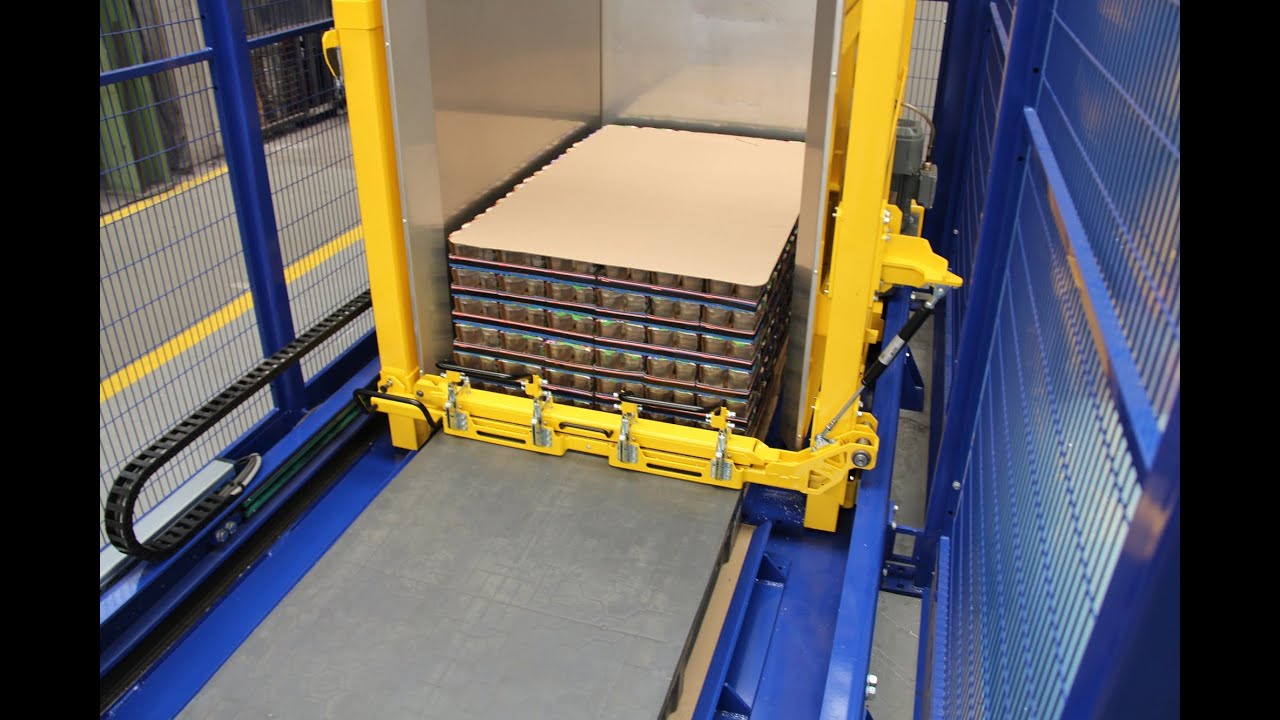
Investing in automation is a big decision. You need to be sure it will solve your problem and deliver a real return. I understand that completely. In my journey from engineer to factory owner, every equipment purchase was scrutinized for its impact on the bottom line. It's not just about buying a machine; it's about investing in a smarter way to work. So, let’s explore the details of these machines. We'll look at how they work, how to choose the right one, and the real-world benefits you can expect. This will give you the confidence to make the right choice for your operation.
What exactly is a pallet changer and why do SMT lines need one?
You've likely heard different terms used interchangeably: pallet inverter, pallet exchanger, pallet transfer system. It can be confusing, and you might wonder if this is an over-engineered solution for your SMT line's specific needs. After all, your team can handle it manually, right? But sticking with manual methods because of this uncertainty means you’re actively choosing to accept inefficiency. You're living with the risks of dropped components, contamination from outside pallets, and the constant threat of a bottleneck that slows down your entire production schedule. Let's clear up the confusion. We need to define exactly what a pallet changer is and identify the critical reasons why an SMT line, with its unique requirements for cleanliness and careful handling, benefits immensely from this specific type of automation.
A pallet changer is a stationary machine designed to safely and automatically transfer a full stack of goods from one pallet to another. SMT lines specifically need one for several critical reasons: to switch from incoming, often-dirty wooden shipping pallets to internal, cleanroom-safe plastic or ESD-safe pallets; to replace a broken or damaged pallet without manually unstacking a fragile load of PCBs; or to adapt to different pallet sizes required by your customers or automated systems, all without disrupting the high-speed, continuous flow of your production line.
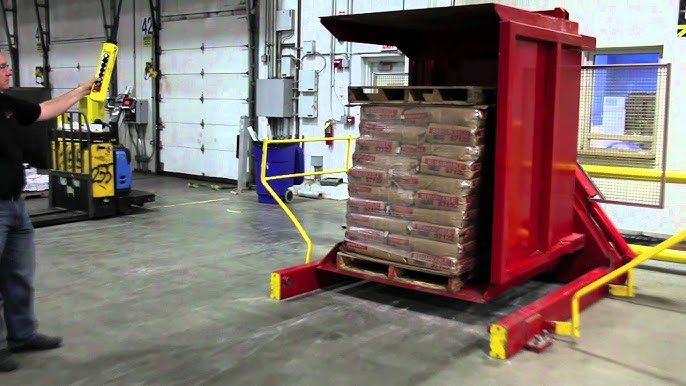
Dive Deeper: The Core Function and SMT-Specific Demands
Let's break this down further. At its heart, a pallet changer performs a simple task, but it does so with a level of precision and safety that manual labor can never match. The core function involves securely holding the product load while the pallet underneath is swapped. This is typically achieved in one of two ways: by clamping the load from the top and sides and then rotating the entire assembly 180 degrees (inversion), or by using a pushing mechanism to gently slide the load from the source pallet to the destination pallet.
Contrast this with the manual alternative. Manually, two or more employees have to lift boxes or trays one by one, place them on a new pallet, and hope everything remains aligned and undamaged. This process is slow, physically demanding, and introduces a high risk of human error. A single dropped box of high-value electronic components can wipe out the profit from an entire production run.
Why SMT Lines Are a Special Case
SMT lines are not just any production environment. They handle components that are highly sensitive to electrostatic discharge (ESD), physical shock, and particulate contamination. This is where a pallet changer becomes not just a nice-to-have, but a vital piece of process control equipment.
- Contamination Control: Your SMT line is likely in a controlled or cleanroom environment. Wooden pallets from outside trucks are a major source of dust, moisture, and pests. A pallet changer acts as a gatekeeper, allowing you to transfer goods onto sterile, cleanroom-approved plastic or metal pallets before they ever enter the sensitive production area.
- Product Integrity: Printed Circuit Boards (PCBs) and other components are fragile. The gentle, controlled clamping pressure of a modern pallet changer is far safer than the unpredictable forces of manual handling. It ensures the stack integrity is maintained, preventing shifting or damage to delicate solder joints.
- Process Standardization: Automation brings consistency. Every pallet swap is performed exactly the same way, with the same speed and pressure. This is crucial for quality management systems like ISO 9001 and for ensuring predictable throughput.
Here’s a simple breakdown of how a pallet changer directly addresses the unique challenges of an SMT line:
| SMT Line Requirement | How a Pallet Changer Provides the Solution |
|---|---|
| High Throughput / No Bottlenecks | Automates pallet swaps in under 60 seconds, keeping pace with the line. |
| Strict Contamination Control | Enables the transfer from "dirty" shipping pallets to "clean" internal pallets. |
| Protection of Sensitive Electronics | Uses gentle, even clamping and smooth transfers to prevent shock and vibration. |
| ESD Prevention | Allows for the seamless introduction of ESD-safe pallets into the workflow. |
| Traceability and Process Control | Standardizes a key handling process, making it repeatable and auditable. |
For a high-tech operation like an SMT line, managing the simple pallet is a surprisingly critical task. A pallet changer transforms this weak link into a strong, reliable, and automated part of your process.
How do you choose the right pallet changer for your specific SMT line?
You are convinced. A pallet changer is the solution to a problem that has been slowing you down. But as you start to research, you're faced with a flood of options. There are inverters, sliders, single-clamp systems, dual-clamp systems, and various levels of automation. How can you possibly know which machine is the right one for your factory floor? Making the wrong choice is a costly mistake I've seen happen before. You could buy a machine that can't handle your maximum load weight, is too slow to keep up with your production takt time, or simply won't fit in the available space. Instead of a solution, it becomes an expensive, oversized paperweight. The key is to avoid this by following a clear, structured evaluation process. By carefully analyzing your specific needs, you can cut through the noise and select the perfect pallet changer that will integrate seamlessly and deliver the results you demand.
To choose the right pallet changer for an SMT line, you must first precisely define your load specifications, including maximum weight, dimensions, and product stability. Next, calculate your required throughput in pallets per hour to determine the necessary cycle speed and level of automation. Finally, you must assess the physical environment, noting space constraints and cleanroom requirements, to select a model—such as a pallet inverter, pusher, or dual-clamp system—that perfectly matches these operational criteria.
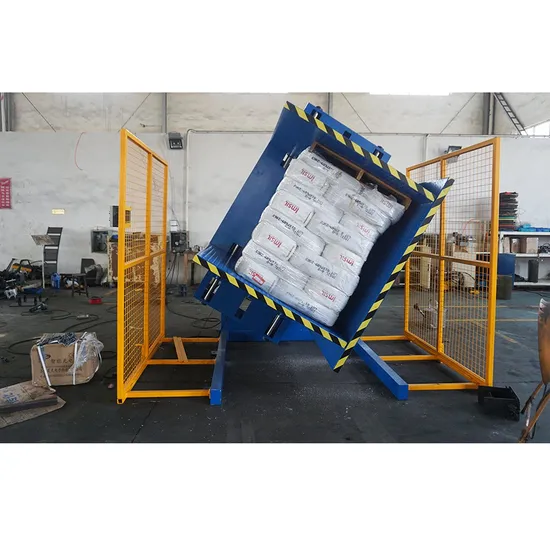
Dive Deeper: A Step-by-Step Guide to Selection
Choosing a piece of capital equipment is a serious task. As an engineer, I always rely on data and a systematic approach. Let's walk through the key decision factors you need to analyze.
Key Decision Factors to Analyze
-
Load Specifications: This is more than just the maximum weight. You need a complete picture of your product load.
- Weight and Dimensions: What is the heaviest and largest pallet load you will ever need to handle? Always plan for your maximum, not your average.
- Load Stability: This is critical for SMT. Are you handling sturdy, boxed components, or open trays of delicate PCBs? An unstable or fragile load may require a machine with side-support walls or a dual-clamp system that holds the product from the sides rather than just the top.
- Product Type: The machine's clamping surfaces must be compatible with your product. You don't want steel clamps pressing directly on cardboard boxes. Look for options with adjustable pressure and non-marking, rubber-lined surfaces.
-
Throughput and Cycle Time: How fast do you need to be?
- Calculate the number of pallets you need to swap per hour or per shift. Be realistic. This will determine if you need a semi-automated machine (where an operator initiates the cycle) or a fully automated, in-line system that works without human intervention. A fully automated system is faster but requires more complex integration with conveyors.
-
Pallet Types: The machine must handle both your "from" and "to" pallets.
- List all pallet types you use: standard wood pallets, plastic pallets, CHEP pallets, half-pallets, etc. Note their exact dimensions (length, width, height). The machine's loading bay must be able to accommodate all of them.
-
Factory Layout and Space:
- Measure the exact footprint where the machine will be installed. Don't forget to account for operational clearance for a forklift or pallet jack to load and unload the machine. Will it be a standalone unit, or does it need to integrate into an existing conveyor system?
Comparing Pallet Changer Technologies for SMT
Once you have your data, you can compare the primary types of machines. Each has its strengths and is suited for different applications.
| Technology Type | How It Works | Pros for SMT Applications | Cons for SMT Applications |
|---|---|---|---|
| Pallet Inverter | Securely clamps the load and rotates it 180 degrees. The old pallet is removed from the top, and the new one is placed on before rotating back. | Fast cycle times. Excellent for stable, boxed, or shrink-wrapped goods. A very secure way to handle the load. | The inversion process may not be suitable for loose, un-strapped layers of product that could shift. |
| Pallet Pusher / Slider | A back wall gently pushes the entire product load from the source pallet across a transfer bridge onto the destination pallet. | Extremely gentle on the product. No rotation or tipping. Ideal for very delicate or unstable loads like stacked trays. | Generally has a slightly longer cycle time than an inverter. May require more floor space for the side-by-side layout. |
| Dual Clamp System | Two side walls clamp the load, lift it slightly, allowing the old pallet to be removed and the new one slid underneath. | The load itself never moves, only the pallets do. The ultimate in gentle handling for the most fragile and unstable products. | Tends to be a more complex and therefore higher-cost system. |
By systematically working through these points, you transform a confusing decision into a logical process. You will be able to clearly articulate why a specific machine is the right investment for your SMT line.
What are the key operational benefits of integrating a pallet changer?
As a business owner, I know that every investment must be justified. A new machine isn't a toy; it's a tool to achieve a specific business goal. You can't go to your board or your financial controller and simply say, "it's faster." You need a solid business case built on clear, measurable returns. Without this, your project will remain stuck in the proposal stage, and you'll be left dealing with the same old inefficiencies while your competitors who embrace automation pull further ahead. So let's move beyond the technical specifications and break down the tangible, operational benefits. We will look at the direct cost savings, the critical improvements in safety, and the boost in product quality that you can use to prove the value of a pallet changer.
The key operational benefits of integrating a pallet changer are a dramatic increase in throughput by eliminating a major manual bottleneck; a significant improvement in worker safety by eradicating the risks associated with manual lifting and re-stacking; superior product protection by minimizing handling and potential for damage; and a massive boost in operational flexibility, allowing you to seamlessly meet diverse customer and internal pallet requirements without ever stopping your production line.
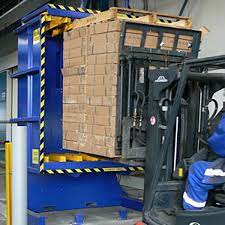
Dive Deeper: Calculating the Real-World Value
The impact of a pallet changer can be seen directly on your bottom line. For someone like Javier, who is focused on metrics like uptime and operational costs, this is the most important part of the conversation. Let's quantify the return on investment (ROI).
Quantifying the Financial Return
-
Direct Labor Savings: This is the easiest benefit to calculate.
- Manual Method: Let's say it takes two workers 15 minutes (0.25 hours) to swap a pallet. If your loaded labor rate is $25/hour, that's
2 workers * 0.25 hours * $25/hour = $12.50per swap. - Automated Method: A pallet changer takes one operator less than 2 minutes to load the machine and press a button. The cost is negligible.
- If you swap 10 pallets per day, that's a direct saving of over $120 per day, or more than $30,000 per year, just in labor.
- Manual Method: Let's say it takes two workers 15 minutes (0.25 hours) to swap a pallet. If your loaded labor rate is $25/hour, that's
-
Increased Production Uptime: This is often the biggest financial gain.
- Your SMT line's value is measured in output per hour. Let's say that value is $5,000/hour.
- By reducing a 15-minute manual swap to a 1-minute automated cycle, you save 14 minutes of production time per swap.
- With 10 swaps per day, that's 140 minutes (2.33 hours) of extra production time gained.
- The value of that recovered time is
2.33 hours * $5,000/hour = $11,650per day. The numbers speak for themselves. This directly addresses the goal of increasing equipment effective run time to 95%.
-
Reduced Product Damage:
- High-value electronics are unforgiving. A single dropped tray or crushed box can cost hundreds or thousands of dollars. While hard to predict, it's easy to track. If manual handling leads to even a 0.5% damage rate, eliminating that through automation can result in massive savings over a year.
Beyond the Numbers: Safety, Quality, and Flexibility
While the financial ROI is compelling, the strategic benefits are just as important for a forward-thinking owner.
- Workplace Safety and Ergonomics: Manual pallet handling is a primary cause of musculoskeletal disorders (MSDs), particularly back injuries. These injuries lead to lost workdays, increased insurance premiums, and lower employee morale. A pallet changer completely eliminates this high-risk manual task. This is a proactive investment in your team's health and safety.
- Quality and Process Control: Automation drives consistency. A machine performs the task perfectly every time, reducing variability and ensuring compliance with quality standards. For SMT lines, this means better contamination control and guaranteed gentle handling, which directly translates to higher product quality and fewer defects.
- Operational Agility: Your customer wants their product on a different pallet type? A supplier sends you goods on a damaged pallet? No problem. A pallet changer gives you the flexibility to handle these exceptions instantly without disrupting your workflow.
Let's summarize the transformation with a clear before-and-after picture:
| Metric | Before (Manual Pallet Swapping) | After (Automated Pallet Changer) | Impact on Business Goals |
|---|---|---|---|
| Time per Swap | 10–20 minutes | < 1 minute | Increases Capacity Utilization |
| Labor Required | 1-2 dedicated workers | 1 operator (part-time task) | Lowers Operational Costs |
| Risk of Product Damage | Moderate to High | Extremely Low | Improves Profit Margin |
| Ergonomic Injury Risk | High (Back, Shoulder Strain) | Minimal | Enhances Worker Safety & Reduces Costs |
| Process Consistency | Operator dependent | 100% repeatable | Boosts Product Quality and Compliance |
The integration of a pallet changer is not an expense. It is a strategic investment that pays dividends across your entire operation, from the factory floor to the final P&L statement.
How can you ensure a smooth installation and integration process?
You’ve done your homework. You’ve analyzed your needs, chosen the perfect machine, and gotten the budget approved. This is a huge step. But the journey isn't over. Now you face the challenge of installing this new equipment and integrating it into your existing production line without causing a major shutdown or endless technical headaches. I’ve seen it happen: a poorly planned installation can lead to extended downtime, unforeseen compatibility issues with conveyors and safety systems, and a frustrated team trying to operate a machine they haven't been trained on. Your exciting new solution can quickly become your biggest new problem. The secret to avoiding this chaos is meticulous planning and viewing your equipment provider as a true partner. With a clear, collaborative plan covering everything from site prep to training, you can ensure a seamless integration.
To ensure a smooth installation and integration process for a pallet changer, you must begin with a detailed project plan. This plan must include thorough site preparation, clear definition of the mechanical and electrical interface points with your existing line, scheduling the physical installation during a planned factory shutdown, and, most importantly, conducting comprehensive operator and maintenance training for your staff before the system goes live.
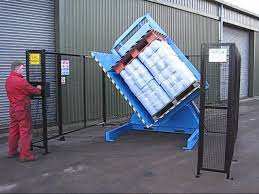
Dive Deeper: From Purchase Order to Production
A successful installation is 90% preparation. As an engineer who has overseen the commissioning of countless machines, I can tell you that the work you do before the machine arrives is more important than the work you do on installation day.
The Pre-Installation Checklist
This is your roadmap to success. Work through it with your supplier.
-
Site Preparation: This is the foundation of the project.
- Floor: Is the concrete floor level and strong enough to support the machine's weight and dynamic forces? I once saw a project delayed by two weeks because the customer had to pour a new concrete pad.
- Utilities: Where are your connection points for electricity and, if required, compressed air? Ensure they have the correct voltage, phasing, and pressure. They must be installed and tested before the machine arrives.
- Layout and Access: Finalize the exact position on the floor. Use tape to mark out the machine's footprint and the required safety zones around it. Ensure there is a clear path for a forklift to bring the machine into place and to load/unload pallets during operation.
-
Interface Planning: This is critical for in-line, automated systems.
- Mechanical Interface: How will the pallet changer connect to your existing conveyors? You will need detailed engineering drawings that show heights, widths, and connection points to ensure a perfect physical match.
- Electrical and Software Interface: This is the "handshake" between machines. Your pallet changer needs to communicate with your line. For example, an upstream sensor tells the pallet changer a pallet is coming, and a downstream sensor confirms the new pallet has been successfully discharged. This requires a detailed Input/Output (I/O) list and collaboration between your control engineers and the supplier's engineers.
The Power of Partnership and Training
This is where you separate a simple supplier from a strategic partner. A supplier sells you a machine. A partner helps you implement a solution.
-
Choosing a Partner, Not Just a Box-Mover: This is at the core of my philosophy at SHJLPACK. A true partner doesn't just email you a tracking number. They provide you with detailed layout drawings. They have technical staff available to answer your engineers' questions. They work with you to create an installation timeline that minimizes disruption, often scheduling the work during your planned annual shutdown. This collaborative approach is what turns a piece of iron into a productive asset. It's the difference between buying a problem and buying a solution.
-
Training is a Non-Negotiable Investment: The most advanced machine is useless if your team doesn't know how to use it properly and safely. A good partner provides structured training on multiple levels:
- Operator Training: Covers the day-to-day operation, safety procedures, touchscreen controls, and how to clear common, simple faults.
- Maintenance Training: Goes deeper for your technical staff. It covers the preventative maintenance schedule (lubrication, inspections), basic troubleshooting of sensors and motors, and how to diagnose error codes.
This investment in training empowers your team, reduces reliance on outside technicians, and is fundamental to achieving goals like predictive maintenance and high equipment uptime. A smooth integration isn't magic; it's the result of professional, detailed planning and a strong partnership.
My Insights
I've spent my entire career in the world of packing and material handling. My company, SHJLPACK, focuses on heavy-duty equipment for steel coils and wire. So you might ask, "Vincent, what do you know about SMT lines?" It's a fair question. The products are completely different—a 20-ton steel coil versus a 500kg pallet of circuit boards. But I've learned that the fundamental problems of manufacturing are universal.
The challenge of moving a valuable product from one container to another, quickly and without damage, is the same everywhere. Whether you're swapping a pallet or transferring steel wire from a large factory spool to a smaller one for a customer, the core challenge is identical. It’s a handling bottleneck that costs time, creates risk, and hinders efficiency. I once worked with a client in the wire industry who was manually re-spooling wire for hours. It was slow, dangerous, and a drain on their resources. We designed a handling machine that automated the transfer. It was a game-changer for their business. They didn't buy a machine; they bought back time and safety.
When I look at your profile, Javier, I see a fellow industrialist. You built a 2-million-ton steel plant. You understand the immense cost of downtime. You know the value of a stable, predictable process. You have already invested in smart technology like waste heat recovery and intelligent scheduling because you see the big picture. You understand that true efficiency isn't about making people work harder; it's about giving them smarter tools.
A pallet changer for your SMT line is one of those tools. You shouldn't view it as an expense for the electronics division. You should view it through the same lens you used for your blast furnace improvements: as a strategic investment in uptime, quality, and cost reduction. The scale of the product is smaller, but the principle is exactly the same. You are eliminating a source of variability and risk from your process.
This is the most important lesson I learned on my journey from being an employee to building my own factory and achieving financial freedom. The most successful companies don't just buy equipment. They build systems. They look for partners who provide a "Total Solution"—partners who help analyze the problem, integrate the equipment, train the staff, and provide support for years to come. That is what turns a machine into a long-term competitive advantage. You've already applied this thinking to the core of your steel business. Applying it to a seemingly small problem like pallet swapping is how you optimize every corner of your operation and continue to lead the industry.
Conclusion
Integrating a pallet changer is a strategic move to boost SMT line efficiency, safety, and profitability. Choose the right machine and, more importantly, the right partner to ensure a successful implementation.

